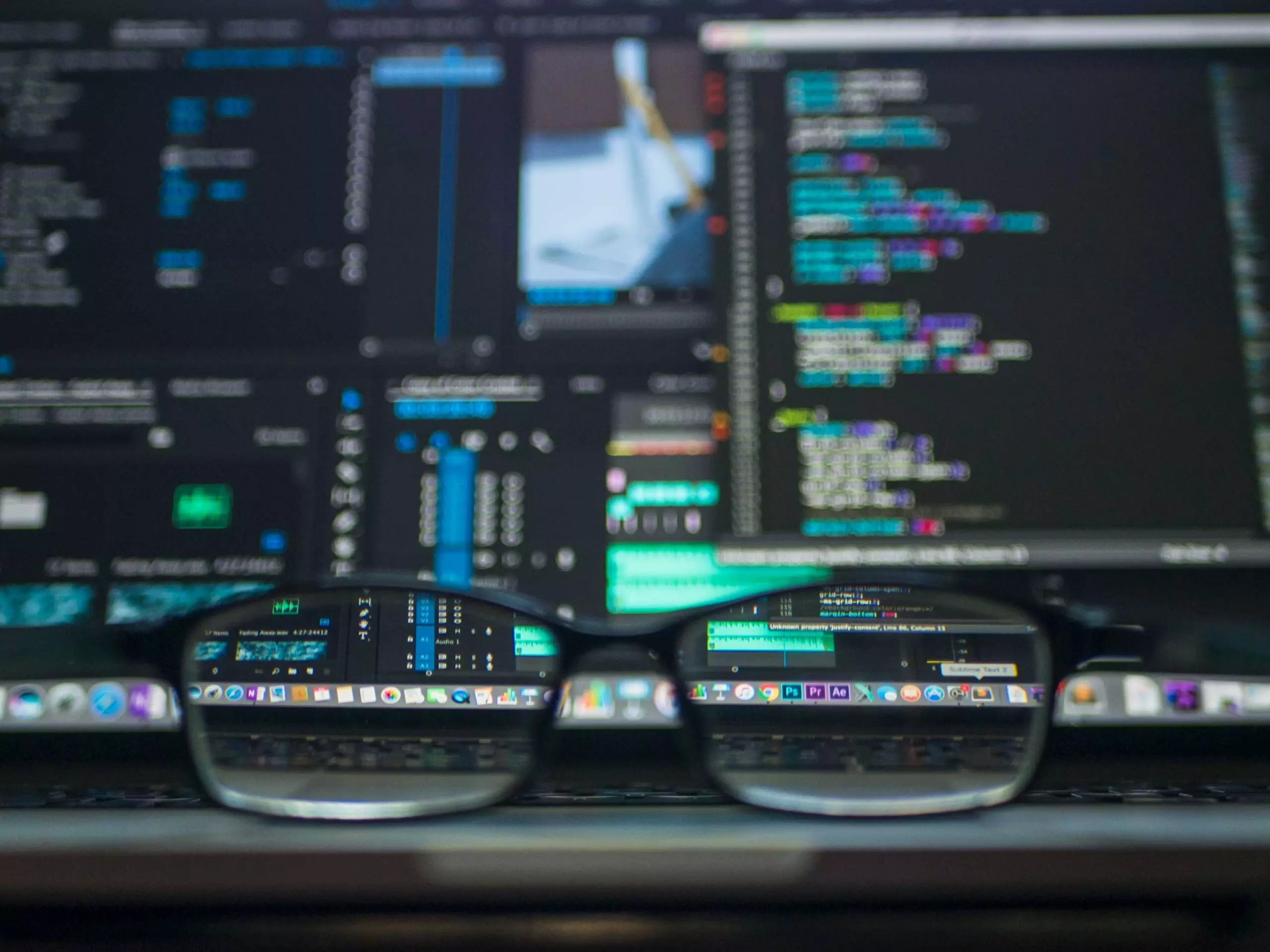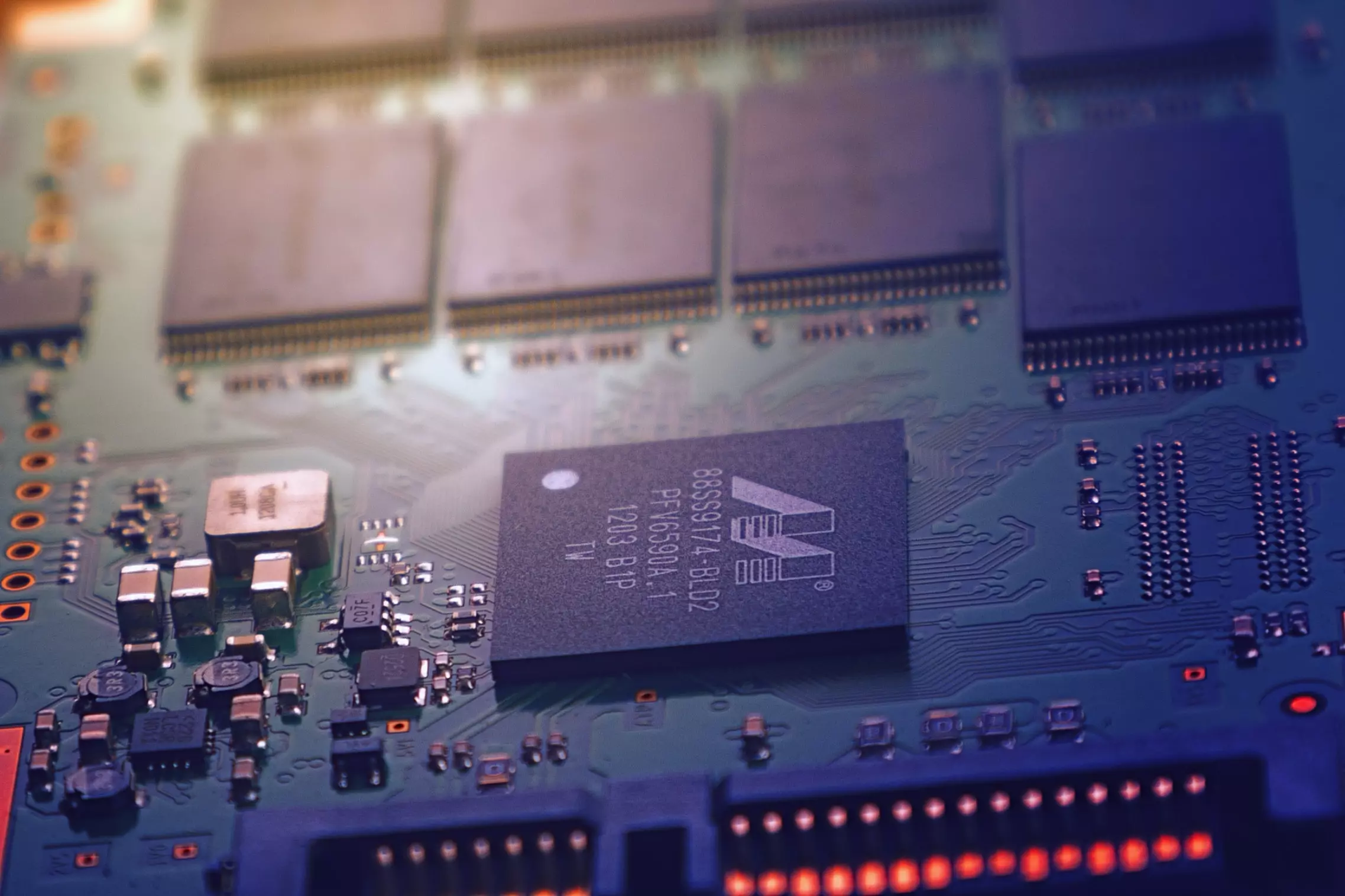Emerging Technologies Shaping the Future of Computing
Artificial intelligence (AI) is gradually becoming an integral part of computing technology, with its influence set to grow exponentially in the future. And, as AI technology continues to evolve, so does the way we interact with computers.
In this article, we will explore the impact AI has on the future of computing and the innovations in computer science that are paving the way for a new era.

Innovations in Computer Science
Computer science is a rapidly evolving field, with more and more innovations introduced on a regular basis. Let’s go over some of those innovations:
- Artificial Intelligence and Machine Learning: These technologies are used to automate various tasks, from image and speech recognition to natural language processing and decision-making.
- Edge Computing: A new computing architecture that brings processing closer to the source of data, such as Internet of Things (IoT) devices and sensors. This reduces latency and bandwidth usage and enables real-time data processing.
- Quantum Computing: An exciting new area of computer science that leverages the properties of quantum mechanics to perform certain types of computations much faster than classical computers.
- 5G and Network Slicing: The 5G network is the next generation of mobile networks, offering faster speeds and lower latency, and is expected to enable a wide range of new applications and use cases. Network slicing is a new technology that allows operators to create multiple virtual networks on a single physical network infrastructure.
- Blockchain: Blockchain is a decentralized, secure, and transparent ledger that can be used for a wide range of applications, from cryptocurrency transactions to supply chain management and voting systems.
Artificial Intelligence (AI) and Machine Learning (ML)
AI includes intelligent machines that can perform tasks without human intervention. AI machines can autonomously complete tasks that require human intelligence. Conversely, ML is a subset of AI that involves algorithms and statistical models to enable machines to learn from data and improve their performance over time.
The applications of AI and ML are vast, ranging from virtual personal assistants like Siri and Alexa to self-driving cars, recommendation systems, and predictive analytics. With the rapid advances in AI and ML, the healthcare, education, transportation, and finance industries are evolving to enhance efficiency, accuracy, and safety.
One major innovation in healthcare is the development of AI-powered diagnosis systems that can detect diseases earlier and with greater accuracy. These systems are being used to improve patient satisfaction and reduce healthcare costs.
In education, AI computing and ML are used to personalize students’ learning experiences, helping them learn more effectively and efficiently.
In transportation, self-driving cars and trucks are being developed, which could significantly reduce traffic accidents and increase efficiency on the roads.
Finally, in finance, AI-powered chatbots are used to provide customer service, while predictive analytics are used to identify potential fraud and improve risk management.
Edge Computing
Edge computing is a distributed computing paradigm that brings computation and data storage closer to the location where it is needed, reducing latency and improving efficiency. In recent years, edge computing has gained popularity due to its ability to handle massive amounts of data generated by the Internet of Things (IoT) devices, which are gradually becoming more ubiquitous.
Recent innovations in edge computing include the development of more advanced hardware and software that can handle more complex workloads and data processing in real time.
For example, new microcontrollers and microprocessors have been developed to handle demanding computing tasks and advanced security features. These innovations enable edge devices to perform more sophisticated analysis and decision-making on the spot without sending data to centralized cloud servers.
In the retail industry, edge computing can be used for real-time inventory management, personalized customer experiences, and in-store analytics. It can help retailers reduce out-of-stock situations and optimize their inventory management processes.
Additionally, retailers can collect and process customer data in real-time to provide personalized marketing messages and product recommendations. Moreover, they can analyze customer behavior in-store to optimize store layouts and improve the customer experience.
In healthcare, edge computing can be used for remote patient monitoring, telemedicine, and clinical decision support. Real-time monitoring of patient health data can improve patient outcomes and reduce the risk of adverse events.
Additionally, real-time video consultations can enable remote diagnosis and treatment of certain medical conditions. Similarly, real-time analysis of patient data can provide clinical decision support to healthcare providers, improving diagnosis and treatment outcomes.
In manufacturing, edge computing can be used for predictive maintenance, quality control, and supply chain optimization. Real-time monitoring and analysis of equipment performance can predict failures and trigger maintenance before they occur, reducing downtime and improving efficiency.
Real-time analysis of production data can identify quality issues and trigger corrective actions immediately. In contrast, real-time monitoring of supply chain data can optimize supply chain processes and reduce costs.
Edge computing has also been integrated with blockchain development technology (more on blockchains later) to create new opportunities for secure and decentralized computing. This innovation is particularly useful in industries where data security and privacy are critical, such as finance and healthcare.

Quantum Computing
Quantum computing uses the principles of quantum mechanics to process information in ways that are deemed impossible for classical computers. Thanks to the innovations in this next-generation computing field, complex tasks can be solved at a higher rate.
One of the most significant recent innovations in quantum computing is the development of quantum processors with a larger number of qubits. Qubits, or quantum bits, are the basic units of information in a quantum computer. With more qubits, quantum computers can handle more complex calculations and algorithms, enabling them to solve problems that are beyond the capabilities of traditional computers.
The development of large-scale quantum processors has also led to the creation of quantum simulators, which can simulate complex quantum systems that are difficult to study with regular computers.
Another new development in quantum computing includes quantum error correction techniques. Because quantum systems are inherently fragile and susceptible to errors, error correction is essential for reliable computation in quantum computers. Recent innovations in error correction techniques have made it possible to create more robust quantum systems that are less affected by environmental noise and other sources of error.
Quantum computing can benefit a wide range of fields, including cryptography, drug discovery, finance, logistics and transportation, artificial intelligence, and climate modeling.
For example, it can help to develop new quantum-resistant cryptographic protocols, accelerate the drug discovery process, optimize logistics and transportation systems, improve machine learning algorithms, and simulate complex climate models. Quantum computing can potentially improve any field that requires large-scale data processing, optimization, and simulation.
5G and Network Slicing
5G is the latest generation of mobile networks, offering higher data rates, lower latency, and increased capacity compared to previous generations. Network slicing is a technique that enables a single physical network to be partitioned into multiple virtual networks, each optimized for a specific application or service.
One of the most significant developments in 5G and network slicing is the creation of ultra-reliable, low-latency communication (URLLC). URLLC enables near-instantaneous communication with minimal delay, making it possible to support applications such as remote surgery, autonomous vehicles, and real-time virtual and augmented reality.
Remote surgery is a particularly sensitive application that requires low latency and high reliability. With URLLC, a surgeon can remotely control robotic instruments with millisecond-level latency, allowing for real-time control and feedback.
This technology reduces the risk of delays and errors that could occur with slower connections and enables surgeons to perform procedures from remote locations, increasing access to medical care.
Autonomous vehicles also rely on low-latency communication to make real-time decisions, avoid collisions, and ensure passenger safety. URLLC technology provides fast and reliable communication between vehicles, infrastructure, and pedestrians, enabling vehicles to make split-second decisions and respond quickly to changing road conditions.
Real-time augmented reality also benefits from URLLC technology. With low-latency communication, virtual and augmented reality applications can respond quickly to user input, ensuring a seamless and immersive experience.
For example, URLLC enables real-time interactive gaming, where users can engage in high-speed games without any lag or delay.
Overall, URLLC has been predicted to revolutionize industries such as healthcare, transportation, and entertainment, where real-time communication is crucial.
Blockchain
Blockchain is a decentralized digital ledger technology that enables secure and transparent transactions without a central authority.
The development of smart contracts is one of the most talked-about innovations in blockchains. Smart contracts are self-executing contracts with the terms of the agreement directly written into code. They enable automated and trustless transactions, reducing the need for intermediaries and reducing costs. Smart contracts are used in various industries, including finance, real estate, and supply chain management, to streamline operations and increase transparency.
Another recent innovation in blockchain technology is the development of Permissioned blockchains. Permissioned blockchains enable only authorized parties to access the network, ensuring better privacy and security. They are used in industries such as healthcare to securely manage sensitive data.
Futuristic Computers: What Are They?
Futuristic computers are a variety of advanced AI computing technologies, which are still in development. These computers may have the potential to completely alter the way we work, communicate, and interact with technology in the future. Let’s take a look at a few examples regarding the future of computer technology:
Neuromorphic Computers
An example of such technology can be found in the neuromorphic computer. Neuromorphic computers are designed to mimic the structure and function of the human brain, enabling them to process and analyze vast amounts of data.
One of the most promising applications of neuromorphic computing is in the field of artificial intelligence (AI). Current deep learning methods in AI require massive amounts of data, computer resources, and energy consumption.
In contrast, neuromorphic computing uses less power and can perform tasks with higher accuracy in some cases. This makes it ideal for tasks such as image and speech recognition, natural language processing, and robotics, where low power is essential.
Neuromorphic computers can also be used in other fields, such as autonomous vehicles, where they can process data from sensors in real time and make decisions quickly and accurately. They can also be used in scientific research to simulate and study the behavior of biological neurons and neural networks, allowing for a better understanding of how the brain works.
Other potential use cases for neuromorphic computers include the following:
- Healthcare: These futuristic computers can analyze large amounts of health data to identify patterns and develop personalized treatment plans.
- Cybersecurity: Neuromorphic computers can analyze network traffic and identify anomalies, aiding in the detection and prevention of cyber attacks.
- Gaming and entertainment: The future of neuromorphic computing can also play a role in creating more immersive and realistic virtual reality (VR) experiences.
DNA Computers
DNA computing explores the potential of using DNA molecules to make way for the future of computing. DNA specifically is a very powerful medium for this, as it can store and process vast amounts of information using very little energy.
Digital data can be stored in a biological form, such as DNA, by converting the binary code of the digital data into nucleotide sequences of DNA. DNA consists of four nucleotides (adenine, guanine, cytosine, and thymine), which can be arranged sequentially to represent digital data. This process is known as DNA synthesis or DNA encoding.
These kinds of technology and computing are still in the early stages of development, with use cases still being speculated.
One of the most promising applications of DNA computing is in medicine. For example, DNA computers can be used for personalized treatment to analyze a patient’s DNA to create custom drug therapies tailored to their needs.
Another potential application of DNA computing is related to data storage. DNA molecules can store vast amounts of information in a very small space. By encoding digital data into DNA molecules, it is possible to store massive amounts of data in a very small physical space, which would be the more eco-friendly way to go about data archiving.
Wearable Computers
Wearable computers are devices worn on the body and designed to perform tasks a regular computer would. But how can they best be used? Here are some potentially promising use cases:
- Health and fitness: Wearable computers can track and monitor health and fitness data, such as heart rate, activity levels, and sleep patterns. This information can then be used to develop personalized health and fitness plans that can be shared with healthcare providers to improve patient care.
- Communication: These devices can be used for voice commands or video calls. This could prove particularly useful for people who work remotely or for those who need to communicate hands-frees, such as first responders or military personnel.
- Fashion: Futuristic computers like these can be used for fashion, especially for those who like combining style and tech.
Key Takeaways
Here are our main takeaways on AI and the future of computing:
- Artificial Intelligence and Machine Learning have vast applications in industries such as healthcare, education, transportation, and finance, where these technologies are being used to enhance efficiency, accuracy, and safety.
- Edge Computing reduces latency and improves efficiency by bringing computation and data storage closer to the location where it is needed. Recent innovations include the development of more advanced hardware and software that can handle more complex workloads and data processing in real time.
- Quantum Computing uses the principles of quantum mechanics to process information in ways that are impossible for traditional computers.
- 5G and Network Slicing offer higher data rates, lower latency, and increased capacity compared to previous generations.
- Blockchain is a decentralized digital ledger technology that enables secure and transparent transactions without the need for a central authority.
- Neuromorphic computers mimic the structure and function of the human brain. They can perform tasks such as image and speech recognition, natural language processing, and robotics with higher accuracy and lower power consumption than traditional computing methods.
- DNA computing explores the potential of using DNA molecules for computing, with potential applications in personalized medicine and data storage.
- Wearable computers are devices worn on the body and can perform tasks such as tracking health and fitness data, enabling communication, and defining style.
Sum Up
In conclusion, the future of computing is looking bright and full of potential. With the right balance of innovation and responsibility, we can create a world where AI and computing can positively impact lives around the globe. We must stay curious and keep pushing the boundaries of what is possible.
Try our real-time predictive modeling engine and create your first custom model in five minutes – no coding necessary!
- Fully operational AI with automated model building and deployment
- Data preprocessing and analysis tools
- Custom modeling solutions
- Actionable analytics
- A personalized approach to real-time decision making



